| Srl | Item |
| 1 |
ID:
173453


|
|
|
|
|
| Summary/Abstract |
The arrival of Japanese bombers and torpedo planes over Pearl Harbor on the morning of 7 December 1941 was a complete shock to Americans. This was not only because the two nations were at peace, but also because the Japanese naval striking force seemed to have possessed a near miraculous ability to support and supply its carriers on the long journey to and from the Japanese home islands into the heart of America's Pacific defenses. It was Japanese mastery of the logistical challenges as much as their audacity that produced the strategic surprise. The ability to keep task forces at sea refueled, regardless of weather, was a capability of which the United States Navy could only dream as the war in the Pacific began. In reality, the Imperial Japanese Navy (IJN), in the war's early years, maintained a near monopoly on large-scale, underway refueling, contributing to its "heady" early success over its American and British naval opponents.
|
|
|
|
|
|
|
|
|
|
|
|
|
|
|
|
| 2 |
ID:
106563
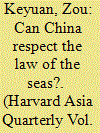

|
|
|
| 3 |
ID:
110167
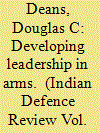

|
|
|
| 4 |
ID:
173651
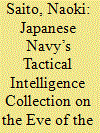

|
|
|
| 5 |
ID:
130338
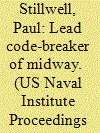

|
|
|
| 6 |
ID:
130465
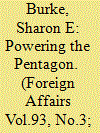

|
|
|
|
|
| Publication |
2014.
|
| Summary/Abstract |
The Defense Department is the United States' largest energy consumer, but it's also a major incubator of cutting-edge technologies. To cut fuel demands and meet new threats, the Pentagon is transforming the U.S. military from an organization that uses as much fuel as it can get to one that uses only as much as it needs.
In the immediate aftermath of World War II, the U.S. naval aviator Thomas Moorer questioned Takeo Kurita, a former vice admiral of the Imperial Japanese Navy, as part of the U.S. military's postwar interrogation of Japanese commanders. Kurita told Moorer that one of the most significant reversals of fortune Japan had suffered during the war was the loss of fuel supplies. "We ran out of oil," Kurita said, and by the end of the war, the Japanese military had grown so desperate, it was operating its equipment on fuel distilled from old tires, rice, and even pine needles. "What I learned then," Moorer would note years later, "was never lose a war, and the way to lose a war is to run out of oil."
|
|
|
|
|
|
|
|
|
|
|
|
|
|
|
|
| 7 |
ID:
133085
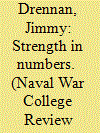

|
|
|
|
|
| Publication |
2014.
|
| Summary/Abstract |
You are a tactical commander tasked with a mission to seek out and destroy one of the enemy's premier capital ships in his home waters. You have two potential striking forces at your disposal: a world-class surface combatant of your own with a 99 percent probability of mission success (Ps = 0.99) or a squadron of eight independently operating, missile-carrying small combatants, each with a chance of successfully completing the mission no better than a coin flip (Ps = 0.5). Do you go with the almost sure thing and choose to send in your large combatant? As it turns out, the squadron of small combatants has an even higher overall Ps but let us now assume that you have advanced to operational commander. You might have more concerns than just overall Ps. What are the defensive and logistical requirements for each option? How much fleet investment are you risking with each option? What will it cost to replace the asset(s) if lost? What capability does the striking force have after successful enemy action (i.e., resilience)? An analysis of these factors, intentionally designed to disadvantage small combatants, is actually overwhelmingly in their favor. The results verify what naval strategists and tacticians have long known-that for certain offensive missions, an independently operating group of even marginally capable platforms can Naval War College Review Vol.67, No.1; Win.2014: p.119-124 Was there something unique to the Japanese that lost them the battle of midway?
|
|
|
|
|
|
|
|
|
|
|
|
|
|
|
|
| 8 |
ID:
117949
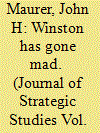

|
|
|
|
|
| Publication |
2012.
|
| Summary/Abstract |
As Chancellor of the Exchequer during the late 1920s, Winston Churchill was at the center of British strategic decision making about how to respond to the naval challenge posed by Japan's rise as a rival sea power. Churchill downplayed the likelihood of war with Japan. The leadership of the Royal Navy disagreed: they saw Japan as a dangerous threat to the security of the British Empire. Examining this dispute between Churchill and the Admiralty highlights the awkward political, economic, and strategic tradeoffs confronting British leaders between the world wars.
|
|
|
|
|
|
|
|
|
|
|
|
|
|
|
|